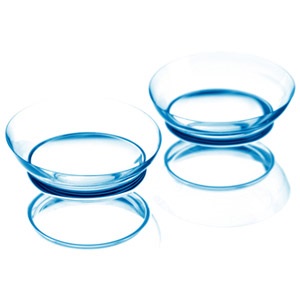
Planned replacement soft lenses are replaced regularly, usually every fortnight or every month. They are available for most prescriptions and require minimal care. Into this category fall a number of types of lens:
- Daily wear soft lenses are made of soft, pliable plastics that allow oxygen to reach the eye itself. They’re easy to get used to and comfortable to wear. Because they’re more difficult to dislodge, they’re often worn by sportspeople. They’re not appropriate for all vision problems and may not provide sharp enough vision for some people. They also require daily removal and cleaning;
- Disposable soft lenses are normally worn for up to two weeks and then discarded. They also demand daily cleaning, but less so than daily wear soft lenses;
- Daily wear disposable soft lensesare worn for a single day, then discarded. The major advantages are that no lens care is needed and fresh ones are worn every day;
- Extended-wear lenses are soft or RGP lenses and can usually be worn for up to 30 days without being removed. They’re available either as rigid gas permeable (RGP) lenses or soft lenses;
- Daily wear rigid gas permeable (RGP) lenses are made from slightly flexible plastics that allow oxygen to pass through them. They may provide sharper vision than soft lenses and can be used to correct most vision problems. They’re also more durable and easier to care for, but it does take longer to get use to them;
- Spherical contact lenses are soft or hard contact lenses that contain a single prescription power;
- Aspheric contact lenses are used by people with only slight astigmatism;
- Toric contact lenses are soft or hard lenses that combine a spherical and cylindrical component to correct astigmatism. They may be thicker in one area than another so that they can stay in the correct position on the eye;
- Bifocal contact lenses work like bifocal eyeglasses, providing sharp vision up close and at a distance;
- Monovision contact lenses entail a near-vision contact for reading fitted to one eye and a distance-vision contact in the other. It works well for some people, but takes getting used to and can affect depth perception;
- Orthokeratology lenses are also called Ortho-K or reverse geometry lenses and are a non-surgical method of adjusting the shape of the cornea. Worn overnight, they progressively adjust the cornea’s shape, remedying the vision defect. The effect lasts about 12 hours.
Read more:
Eyestrain
Pterygium, the filmy membrane
How long can you store contact lenses?




 Publications
Publications
 Partners
Partners















